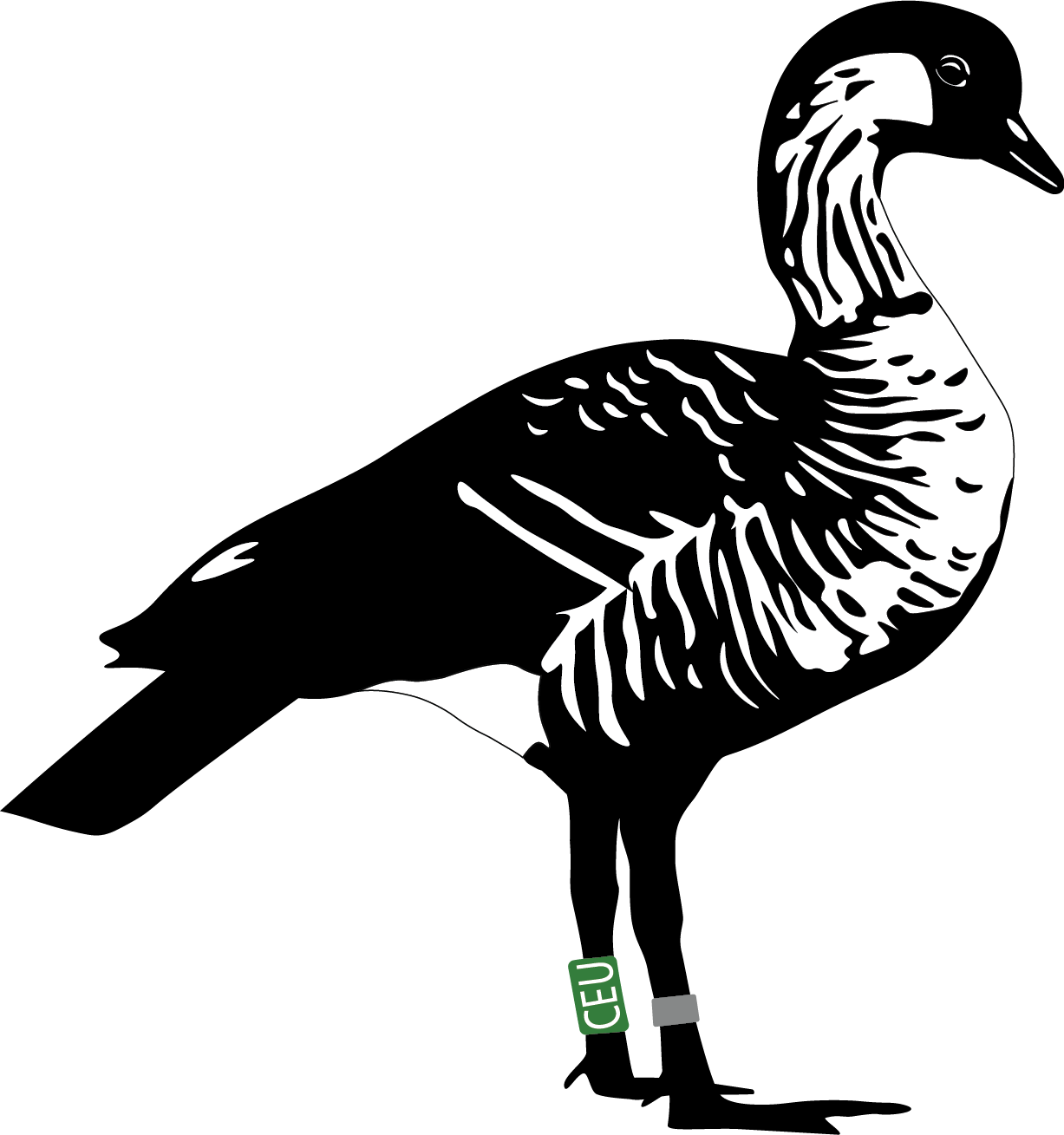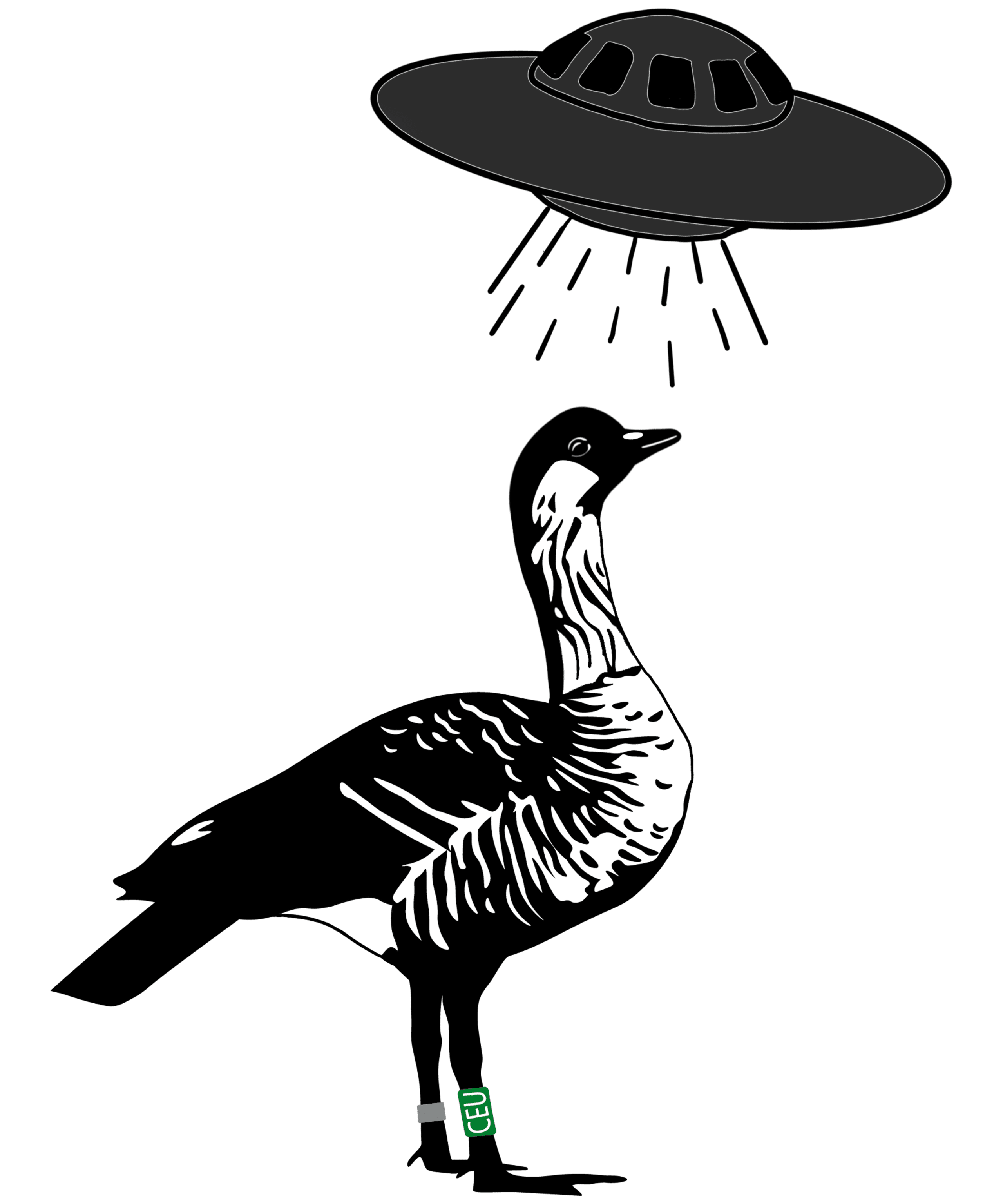April 12, 2023
TLDR;
In response to a petition started by Kāko’o Haleakalā, the DLNR has ordered the removal of cat-feeding stations at a Hawai’i Island shopping center after receiving complaints that the endangered nēnē (Hawaiian goose) are being negatively affected by eating cat food and interacting with feral cats. Queens’ Marketplace, which did not install the stations, agreed to remove them. The DLNR highlighted several concerns, including unnatural diet, altered behaviors, habituation to humans, and exposure to the infection toxoplasmosis. If the shopping center owner, A&B, does not comply, they could face penalties. DLNR urges people to keep pet cats indoors, avoid feeding feral cats, and support a “Trap, Neuter, Adopt” model to transition feral cats into indoor care.
Our take:
We have documented at least 24 36 nēnē at the Queens’ Marketplace parking lot. This is based on our own observations, submissions to nene.org, and social media posts. The first report of this occurrence dates back to May 2019. We are working with Alexander & Baldwin and Abaykitties to develop a plan to reduce recruitment into the cat colony and relocate adoptable cats to shelters in the mainland.
Our initial proposal based on conversations with both parties can be found here:
Proposal for 2-year effort to remove a feral cat colony from Waikōloa
The accelerated compliance timeline set by the DLNR presents challenges to the plan, as Abaykitties will cease caring for the colony after April 15th 21st. While we generally support these conservation efforts, we believe it is essential to involve cat advocacy groups in the decision-making process and not overlook the colony’s needs during this transition. We acknowledge that the colony must be removed, but there is an increasing need to address the underlying issues as well. We consider this a step in the right direction and remain committed to collaborating with the community to ensure a successful outcome.
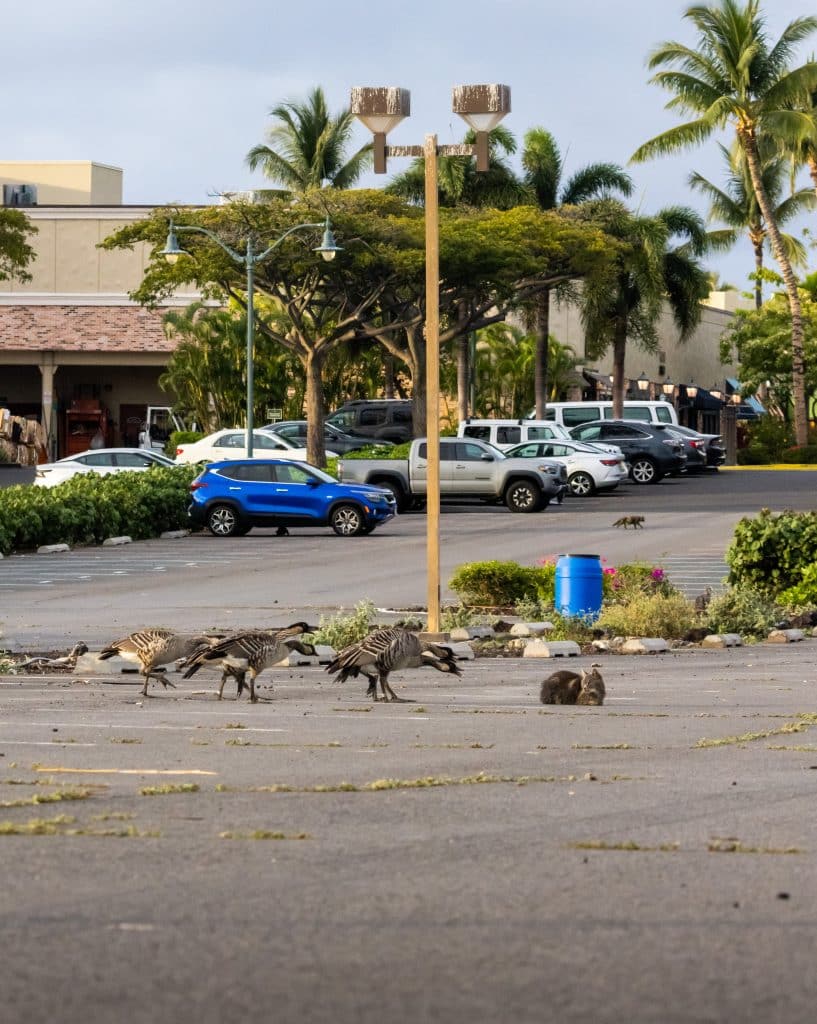
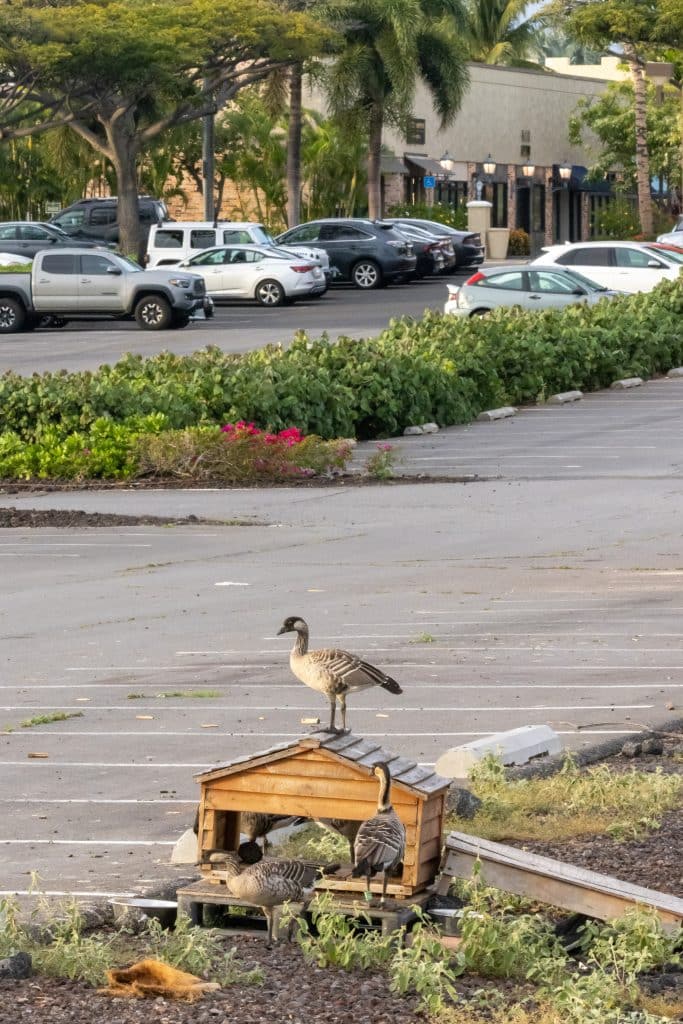
April 14 Update:
We want to reiterate that the proposal linked above was written by nene.org after talking with all parties as part our solution-first approach to resolving this conflict and is in no way a reflection of the thoughts or actions of anyone else. New information we learned during our discussion with Abaykitties today has changed some of our underlying assumptions that we used while drafting the proposal. Unfortunately, based on the feedback from the cat community, it appears our solutions-first approach was flawed and our help is no longer being considered. We will continue to update this page with any new information that is learned while we work with the community to monitor the nēnē population in Waikōloa.
April 15 Update:
At least one nēnē was documented at the cat colony site in the parking lot of Queen’s Marketplace today. We appreciate the citizen science submissions to help us keep track of sightings! If you see nēnē anywhere in the State of Hawaiʻi, photos are helpful to better understand their habitat usage, movements and population dynamics!
April 19th Update:
24 nēnē were reported to us by onsite staff in the Queens’ Marketplace Parking lot. They also mentioned a motorist in a dark colored truck was seen dumping cat food around the parking lot in the early morning. Maintenance crews are worked diligently to remove the piles of cat food before nēnē find them. Additional food piles were found throughout the property and were already being scavenged by nēnē.
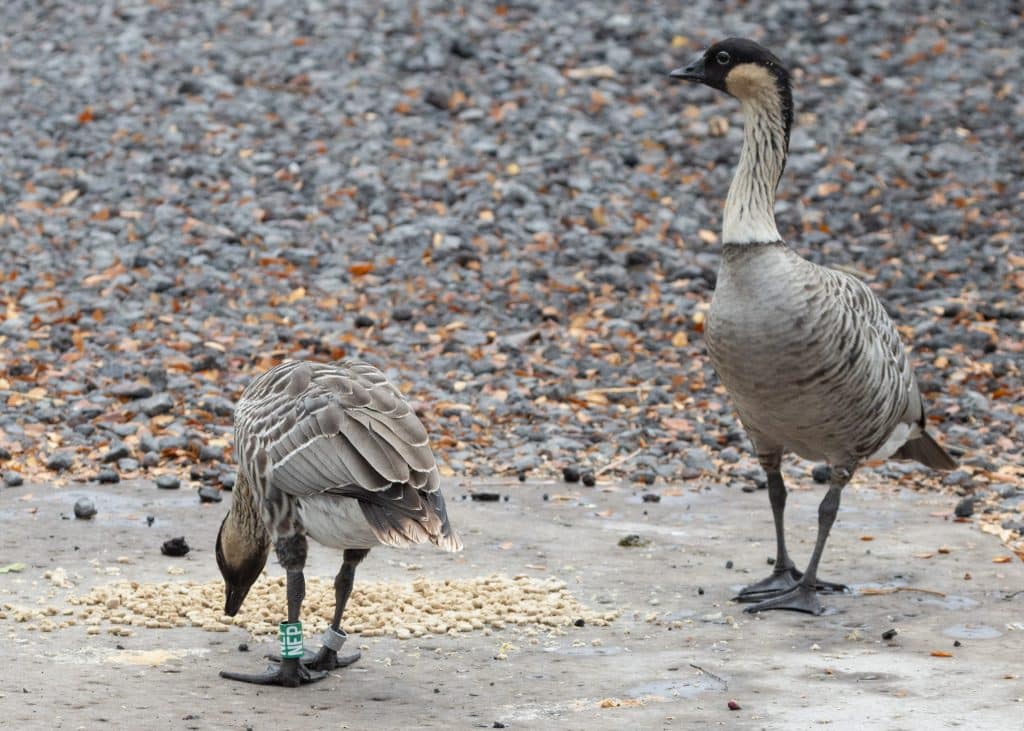
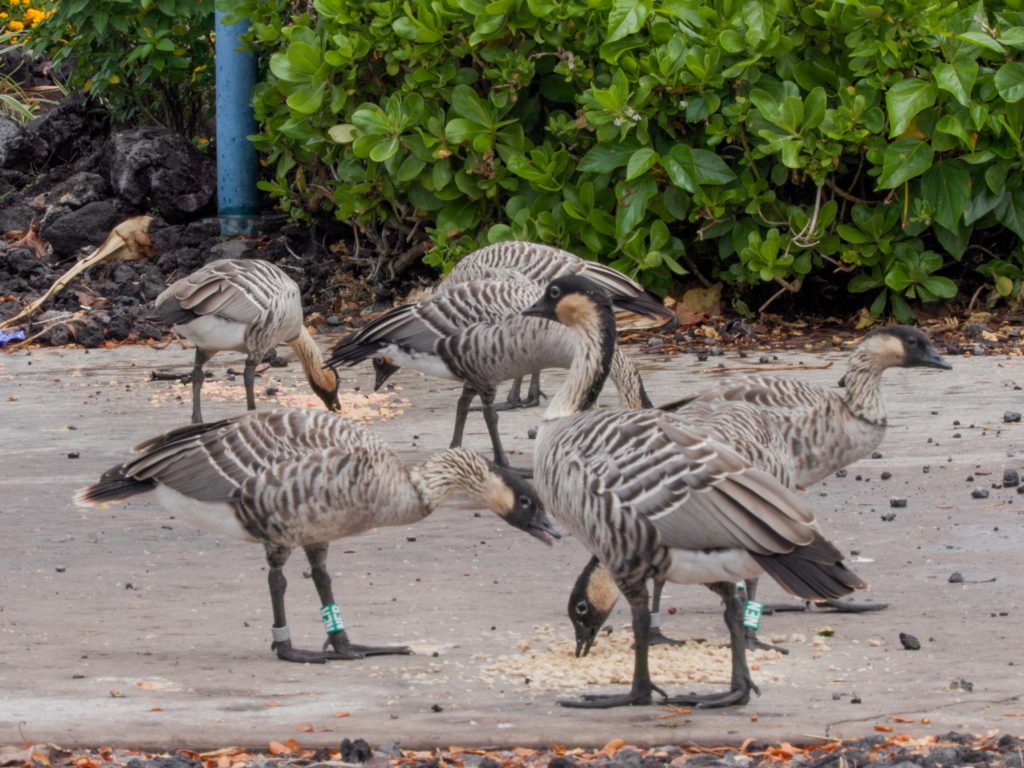
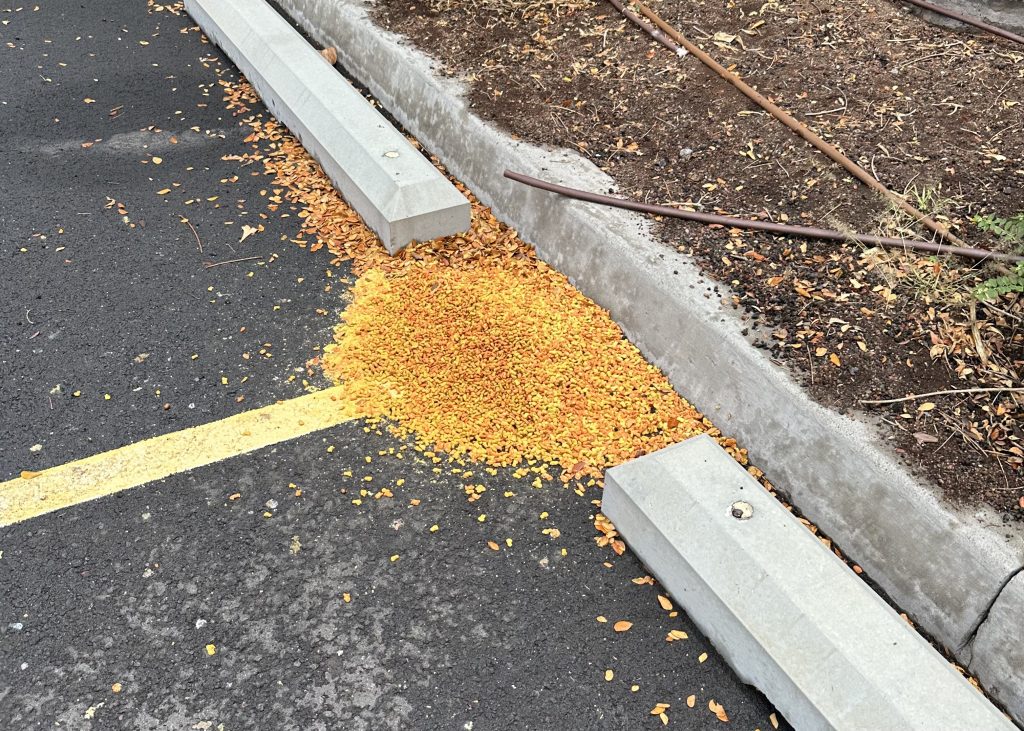
FAQs
How many cats are there?
Abaykitties could not provide an estimate. Alexander & Baldwin estimated around 150 in this parking lot area alone though not much is known about colony dynamics and use of other feeders around the resort area. Our proposal (linked above) did include effort to measure the population size using game cameras. Our unscientific estimate is ~600. We started opportunistically taking photos of cats while doing surveys of this site. So far we have taken ~3800 images and identified 72 unique cats. As of right now we are filtering out cats who don’t have any unique or identifiable markings as it could be easy to be double counted. We will work on integrating those cats into our total count once our discovery curves for unique cats starts flattening.
Why can’t nēnē be relocated as this isn’t their natural habitat?
Previous attempts to relocate at-risk nēnē were largely unsuccessful because of their ability to fly. Nēnē are a native species so anywhere they currently reside is their natural habitat whether we like it or not. We have sightings of 271 banded individuals who use the Waikōloa area including some who migrate to Volcano. It remains unclear how knowledge of these feeders spreads among the population. However, our sightings indicate the presence of family groups, which may suggest that the behavior is learned within these groups.
Nēnē are no longer endangered and their population is growing so this isn’t a concern.
Nēnē are still listed as endangered by the State of Hawaiʻi and Federally listed as threatened. Only the population on Kauai is growing, populations on the other islands have remained stagnant or are in decline. Learn more about the population growth/decline on our data page. Regardless of of their endangered status, nēnē are still protected by federal law under the Migratory Bird Treaty Act.
Why is it bad that nēnē are eating cat food?
Cat food is not a natural part of nēnē’s diet, and feeding them alters their natural behaviors, exposing them to dangers from vehicles, dogs, feral cats, and mongooses. This habituation to humans leads to the birds’ separation from their natural environment and increased reliance on feeding stations. Furthermore, cats are carriers of the infection toxoplasmosis, a significant cause of death for nēnē. Traffic collisions and death from trauma, both potentially exacerbated by T. gondii infection, account for a significant percentage of nēnē fatalities. Nēnē already exhibit the highest infection rates of T. gondii among bird species worldwide, making it crucial to minimize their overlap with colonies where infection rates are higher.
Trap, Neuter, Release, Maintain (TNRM)
To ensure the effectiveness of TNRM, a substantial portion of the cat population needs to be neutered, and the introduction of new cats (through abandonment) should be minimized. However, various factors have hindered the success of TNRM in Waikōloa, including limited facilities and veterinarians, high costs, an overwhelming number of cats, and a lack of community education. It is important to note that this is not a reflection on those caring for the colony. Instead, it underscores the need to monitor key metrics over time in order to properly assess the effectiveness of TNRM and adapt strategies as necessary.
